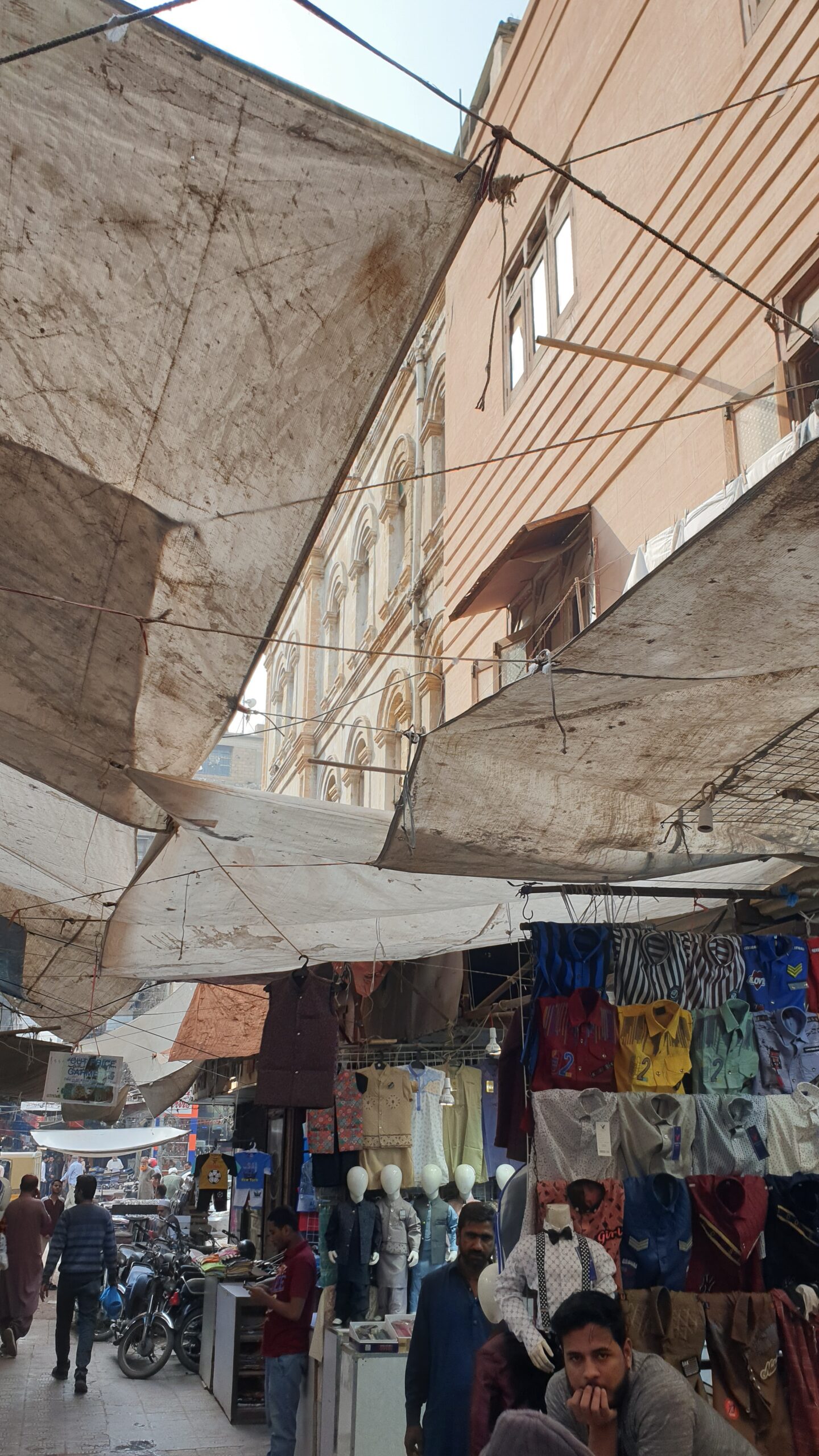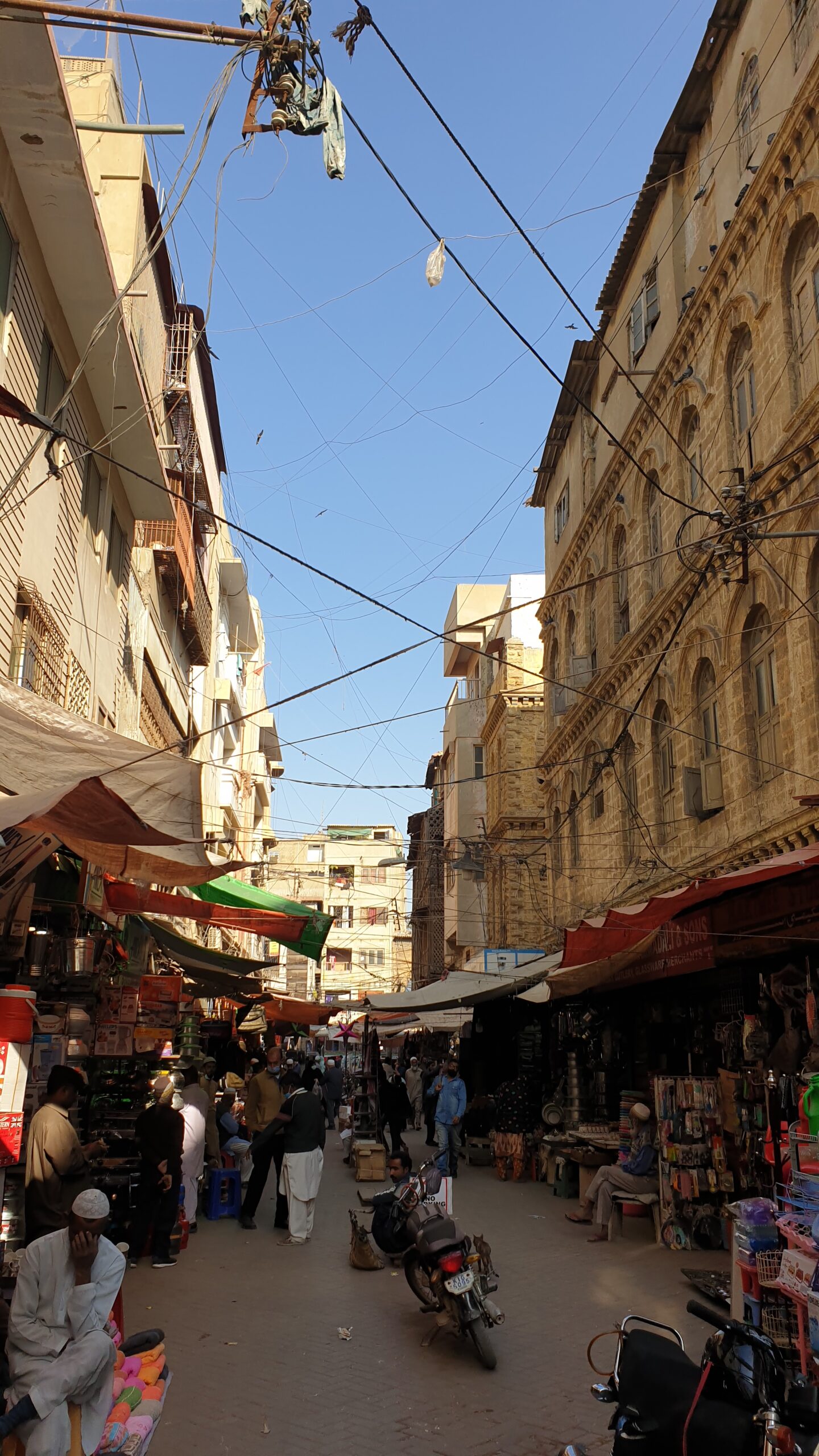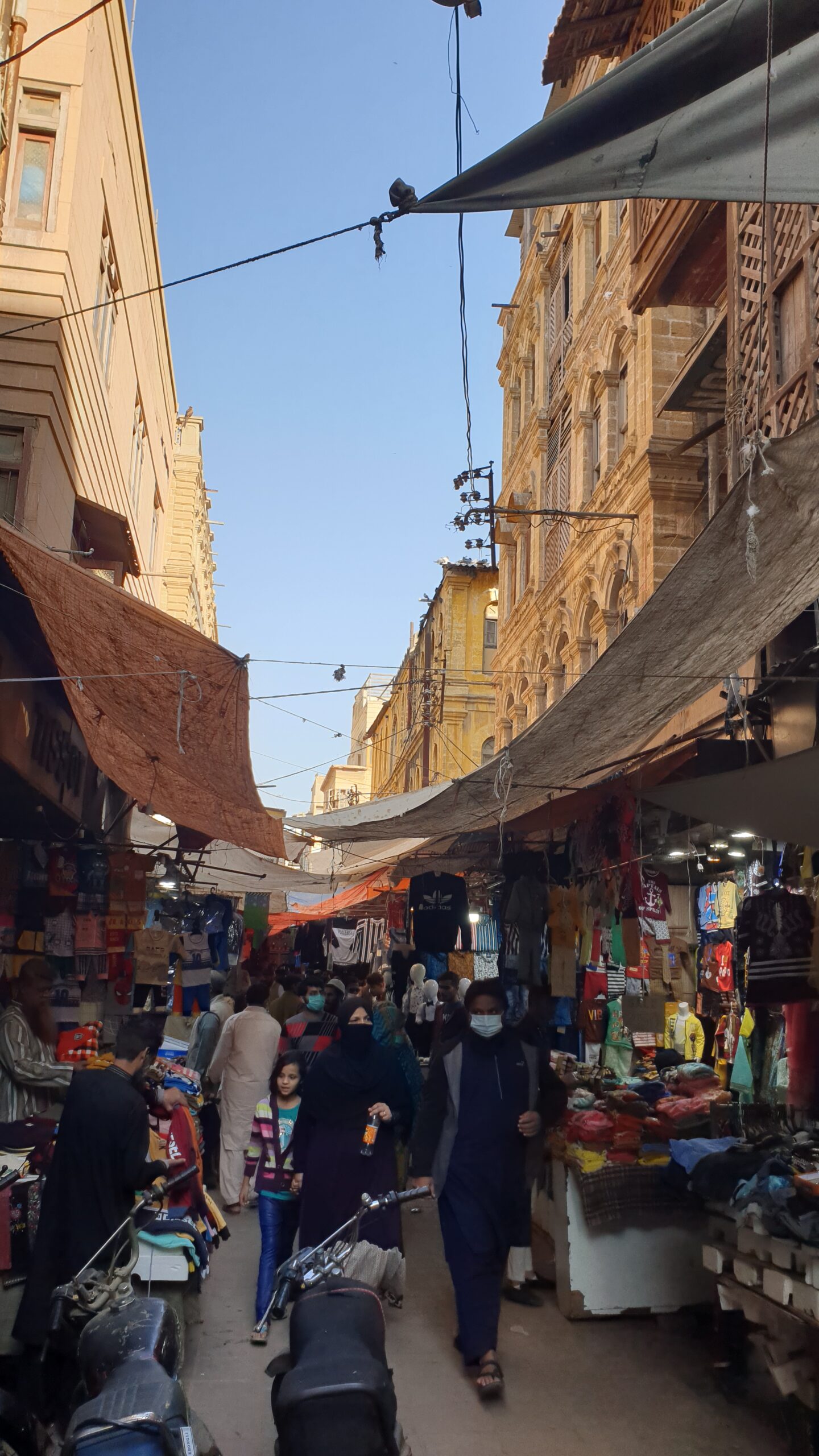
“Bohri Bazaar, to a great extent, has preserved its original retail typology benefitting all social and income groups of society. In addition, the design that allows only pedestrian accessibility bestows a sense of freedom to all the users, without compromising the experience and the touristic attraction of the shopping streets in Bohri Bazaar.
While visiting, interacting with the area’s users was the key moment to understand that the narrow street layout with British/European style buildings and the present congested spaces in the streets creates a sense of ownership, integrity, and an intangible connection between the people and area. Moreover, users — whether they are building owners, businessmen, shoppers or passersby — feel a connection of belonging with the area. The whole atmosphere of the Bohri Bazaar streets lined with historic buildings from the British era, with the dual spatial quality of commercial and residential activities, provides a picturesque backdrop of the past in the present.”
(Quoted from Akbar, S. H., Soomro, T. A., Van Cleempoel, K., & Iqbal, N. (2022). An Inquiry into the Genius Loci of Karachi’s Bohri Bazaar Area in Pakistan. 3rd Valencia International Biennial of Research in Architecture, VIBRarch/Changing Priorities, Valencia)
Understanding the spirit of a place or genius loci is a phenomenon you cannot learn but feel through its tangible or intangible features. While visiting the Bohri Bazaar area in Karachi, Pakistan, for my research in 2020-2021, I not only felt the spirit of the Bazaar, but I experienced it. Wandering in those narrow streets aligned in the grid-iron pattern, I felt the essence of the British past through the 19th and 20th-century Colonial-style buildings, but at the same time, I saw how the users of the area have changed, altered and informally adapted the streets and shops according to their changing requirements. This informal adaptive reuse created an astonishing environment that juxtaposed the humble past in the rapidly changing present.
That was the critical moment for me to experience the genius loci of the Bohri Bazaar and realise how the tangible and intangible characteristics complement each other to enable the area to survive for future generations. Observing and experiencing this informal adaptive reuse not only helped me understand the area but also gave me the idea of exploring the potential of the bazaar and its buildings through different concepts including architectural endurance and urban palimpsest. This enabled me to come up with a unique vocabulary for preserving Bohri Bazaar and its British era buildings for future generations.


